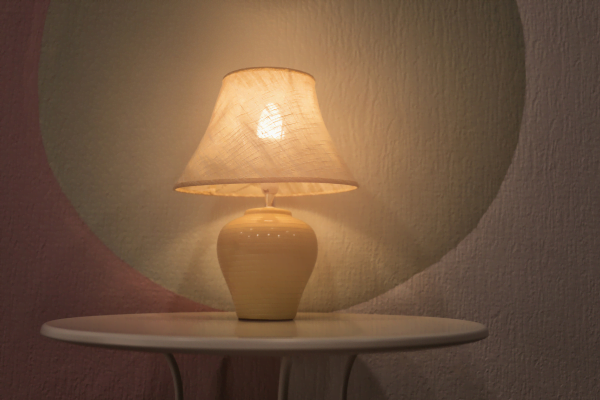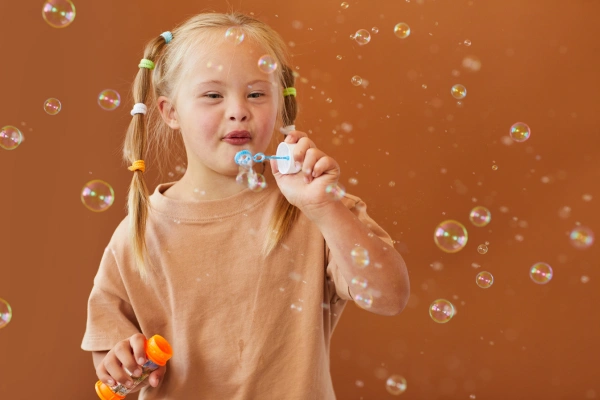
Imagine this: your child returns home from a busy day at school. The classroom was bustling, the hallways echoed with chatter, and the fluorescent lights hummed overhead. Now, they crave a moment of peace, a space to unwind and recharge. But instead of finding solace, they seem overwhelmed, agitated, or withdrawn.
This scenario is all too familiar for families with children who have sensory processing differences. Often a co-occurrence with Autism Spectrum Disorder (ASD), sensory processing differences impact how the brain receives and interprets information from the world around us – sights, sounds, smells, tastes, and touch. Everyday stimuli that most people barely register can be perceived as overly intense, even unpleasant, for a child with sensory processing challenges.
This is where creating a sensory-friendly haven in your home becomes crucial. By making small adjustments to your environment, you can provide a space for your child to feel safe, calm, and regulated. This, in turn, fosters emotional well-being, improves self-regulation skills, and supports overall development.

Understanding Sensory Processing
Our sensory systems are constantly bombarded with information. The role of the brain is to filter, organize, and interpret this information, allowing us to navigate the world around us. For children with sensory processing differences, this process can be disrupted. They may be:
- Hypersensitive: Overly sensitive to certain sights, sounds, smells, tastes, or textures. A bright light might feel like a physical assault, or the sound of a vacuum cleaner could be unbearable.
- Hyposensitive: Under-responsive to sensory input. They might crave intense sensations, such as seeking out rough textures or loud noises.
- Sensory seeking: Craving specific sensory experiences to feel regulated. This could involve rocking, jumping, or spinning.
Building a Sensory Haven: Small Changes, Big Impact
The good news is that creating a sensory-friendly haven doesn’t require a complete home renovation. Here are some simple and effective ways to make a big difference:
1. Sight

- Light: Harsh fluorescent lights can be bothersome. Opt for lamps with dimmer switches or use softer bulbs to create a calming ambiance.
- Visual Clutter: Too much visual clutter can be overwhelming. Keep surfaces clear and minimize busy patterns on walls and furniture. Consider using calming color palettes like soft blues, greens, or neutrals.
2. Sound

- Noise Reduction: Minimize background noise by turning off electronics when not in use. Consider white noise machines to mask distracting sounds.
- Designated Quiet Spaces: Create a quiet space in your home, like a reading nook or a tent, where your child can retreat if they feel overwhelmed by noise.
3. Touch

- Comforting Textures: Provide access to soft blankets, weighted lap pads, or fidget toys with different textures. These can be calming and provide proprioceptive input, which helps with body awareness and self-regulation.
4. Smell

- Aromatherapy: Diffusing calming essential oils like lavender or chamomile can create a relaxing atmosphere.
Creating a Safe Space
When designing your sensory haven, it’s important to involve your child. Let them choose calming colors for their space, pick out comfortable blankets and pillows, and select fidget toys they enjoy. This sense of ownership fosters a feeling of safety and security.
Remember, sensory needs are unique to each child.
What works for one child might not work for another. Experiment with different strategies and observe your child’s responses. Pay attention to their body language and emotional cues. When they seem calm and engaged, you’re on the right track.

A sensory-friendly haven goes beyond just creating a calming space. It’s about providing a foundation for your child’s overall well-being. In this safe and supportive environment, they can:
- Self-regulate: Learn to manage their sensory responses and emotions.
- Focus and Learn: Be better prepared to focus and learn in other environments.
- Reduce Anxiety: Feel less overwhelmed and anxious in everyday situations.
- Build Confidence: Develop a sense of control and confidence in their abilities.
Creating a sensory-friendly haven is an investment in your child’s future. It’s about providing them with the tools they need to thrive in a world that can sometimes feel overwhelming.
If you have any questions or require further resources, please don’t hesitate to connect with us at ONE Intervention Centre. We are dedicated to providing individualized care for children with ASD and their families. Together, we can create a brighter future for your remarkable children.
Ready to learn more? Visit our website at https://www.oneintervention.org/ to discover how our programs can empower your child’s success. You can also find us on Instagram and Facebook @oneintervention


